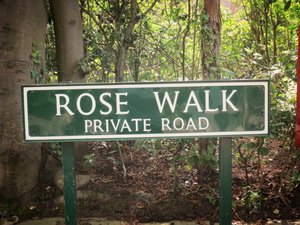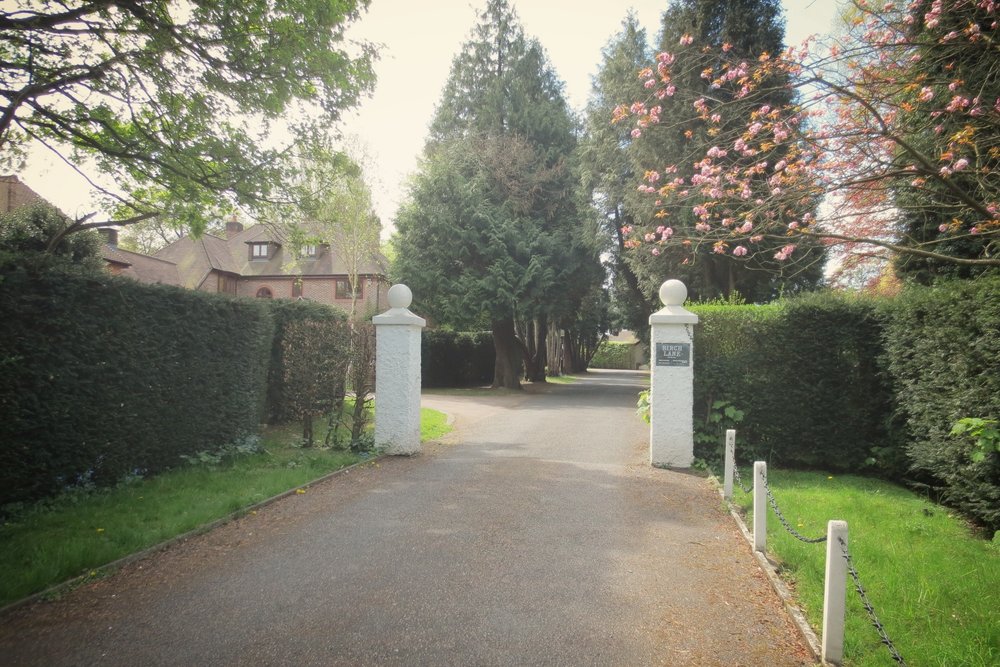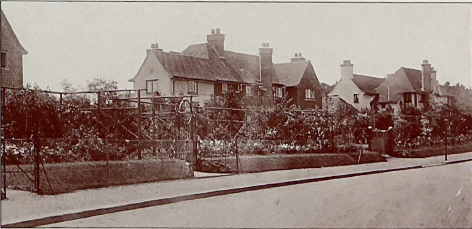Rose Walk

Rose Walk was laid out in 1907, and the first plots were offered for sale in 1911. It is one of the more famous roads on the estate, and some of its characteristics are remarkable
Plantation
- The rose border in front of each plot
- Beech, Birch, Horse Chestnut, Pine, Spruce, Fir
- Cherry, Plum, Laburnum, Holly
Queen Mary used to visit the road each year to admire the roses, as did many others. To this end each rose was carefully labelled for the benefit of the public. In 1920, an account appeared in a known newspaper, which stated that the "amazing display of colour of every hue; of great roses or buds on the many thousand bushes, with the wealth of perfume, would put the finest exhibition of The National Rose Society entirely into the shade" and described the road as "one of the sights of England."
Rose Walk is gated at each end, and single storey lodges were erected for gatekeepers, at the east end in Surrey style, in the west in Sussex style. The gates are of are of wrought iron with voluted tops and hand from red brick pillars. Those at the east end were made in an unusual way: Webb insisted that the bricks be rubbed down to two inches from the unusual three, and only allowed two rows to be laid each day, to allow through drying.


The corners are chamfered and the lines of mortar are very thin. Stone plinths and caps support ornamental balls, over which sprays of roses entwine. The Western gate has Tudor roses, with gilded leaves, included in the pattern of the ironwork. The decorative stone caps were designed by the sculptor Tonelli.
The final word on Rose Walk should come from Webb himself. "Floral decoration of the roadside is capable of endless variety, but it was perhaps natural to choose the Queen of Flowers for the first experiment in that direction, and the notion that roses would lend themselves well to the style of treatment has not been dispelled by subsequent experience."
Early view of Rose Walk


